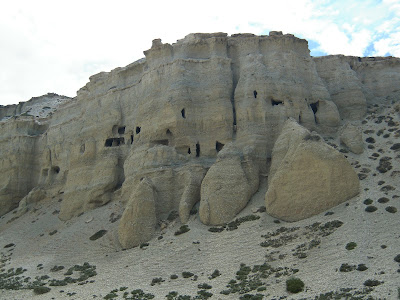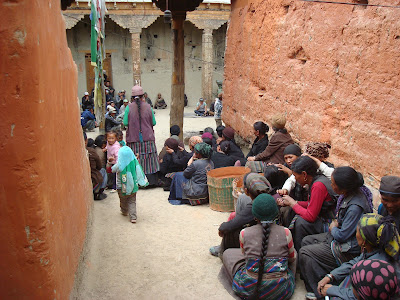Sport (kili) or (lila)
is, in the broadest sense, physical exertion for the purpose of recreation,
health or competition. Like all peoples, the ancient Indians played and enjoyed
a wide variety of sports. Garden sports (uyyanakila) consisted of games like hide-and-seek, tag and
racing, while water sports (udakakila) involved swimming and diving. Stick fighting,
boxing, wrestling, callisthenics and other sports and games were probably
played in stadiums (kelamandala,
Ja.VI,333). Several other games were played with a ball although we have little
information about how these activities were structured. One game we do know
something about was played with a string attached to a ball and involved
throwing the ball, jerking back the string and trying to catch the ball in the
hand (Ja.V,196). The Buddha had nothing to say about sports other than that monks and nuns should not watch them (D.I,7). Nonetheless, the physical and
psychological aspects of sports could have relevance to the Buddhist.
The Buddha said: `Good health is the highest gain'
(Dhp.204), and he encouraged monks and nuns to do exercise as a way of
promoting vigour and health (Vin.II,119). As far as the mind is concerned, sport can help to develop positive states like
team spirit, friendship, alertness
and even a degree of detachment (gracefully accepting defeat). Sadly, nearly
all sports today have become excessively competitive and few things bring out
the worst in people as much as competition does. Cheating, violence by both
spectators and players, personal animosities, doping, match fixing and being a
bad loser have all become the norm in professional sports. Some encounters are
even promoted as `grudge matches.' The old value of `it is not whether you win
or lose but how you play the game' has been unceremoniously shoved aside by
large egos and even larger salaries.
A good
example of a sport that requires great skill, is healthy for the body and restful for the mind,
conducive to friendship and mutual appreciation
amongst players and is enjoyable for spectators, is called chin lon in Burma, takraw
in Thailand and sepak takraw in Indonesia.
The idea of this sport is to keep a cane ball in the air by knocking it only
with the heels, knees, elbows and shoulders. There is no competition as such;
one player keeps the ball for a while, demonstrating his skill and grace,
before letting it go to another player. No one wins or loses and everyone
enjoys themselves. Sometimes chin lon
is played to the accompaniment of music.
It is common for young men to assemble wherever there is space, often in a
temple courtyard, and whenever they have free time and just play this game.
In the last few decades chin
lon/takraw/sepak takraw have started to be turned into
competitive sports spawning high-powered advertising, prize money, star
players and teams, cheating, drugs, court cases, appeals, magazines
highlighting the opinions, tastes, personalities and sex lives of players,
etc. It’s a pity really but I suppose
it’s inevitable.
The Buddha observed: `Winning provokes resentment, the
loser lives in distress. Giving up winning and losing one lives in peace and
happiness.' (Dhp.201).

































































